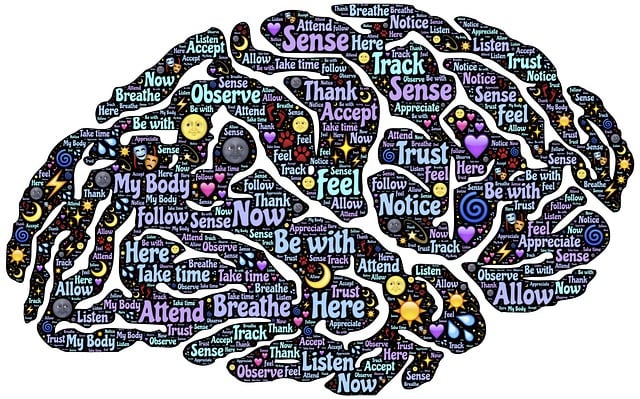Public awareness campaigns targeting Golden Drug Abuse (Substance Abuse Therapy) leverage educational initiatives and community outreach to empower individuals with knowledge and alternative coping mechanisms, preventing drug abuse. Tailored messages for diverse audiences, based on demographics and needs, resonate personally, encouraging positive behavior change. A structured approach involving research, strategy design, and compelling communication drives these campaigns. Measuring success through surveys, attendance, and feedback assesses their impact, demonstrating the holistic benefits of such initiatives.
Public awareness campaigns play a pivotal role in tackling complex issues like drug abuse. This article delves into the multifaceted development process, offering a comprehensive guide to combating Golden Drug Abuse and promoting Substance Abuse Therapy. We explore key strategies, from understanding public perceptions through education to identifying target audiences and crafting compelling messages. Learn how effective campaign strategies, innovative communication methods, and meticulous evaluation ensure maximum impact in raising awareness and encouraging therapy-seeking behaviors.
- Understanding Public Awareness: The Role of Education in Preventing Drug Abuse
- Identifying Target Audiences: Tailoring Messages for Maximum Impact
- Crafting Effective Campaign Strategies: From Research to Implementation
- Visual and Verbal Communication: Designing Engaging Content for Various Media
- Measuring Success: Evaluating the Effectiveness of Public Awareness Campaigns for Substance Abuse Therapy
Understanding Public Awareness: The Role of Education in Preventing Drug Abuse

Public awareness about drug abuse is a powerful tool for prevention. By educating communities, we can foster an environment that discourages substance use and promotes healthier alternatives. Educational initiatives play a pivotal role in empowering individuals to make informed decisions regarding their well-being. Through interactive programs, workshops, and awareness campaigns, people gain insights into the potential risks and consequences of drug abuse, targeting both emotional and intellectual aspects.
A well-designed community outreach program implementation can act as an effective strategy. By engaging with at-risk groups, providing anxiety relief techniques, and emphasizing emotional well-being promotion, these programs offer support and alternative coping mechanisms. The goal is to prevent the onset of drug abuse by equipping individuals with knowledge and tools to navigate challenges without resorting to harmful substances, ultimately reducing the burden on Substance Abuse Therapy services.
Identifying Target Audiences: Tailoring Messages for Maximum Impact

Identifying target audiences is a crucial step in developing effective public awareness campaigns about substance abuse therapy and mental health. By understanding who your audience is, you can tailor messages that resonate with them on a personal level. Different demographics, age groups, and communities may have distinct needs and challenges related to drug abuse and emotional well-being promotion techniques. For instance, targeted campaigns for youth might focus on peer pressure resistance and coping skills development through creative outlets like art or music therapy. In contrast, awareness initiatives aimed at older adults could emphasize the importance of mental wellness coaching programs that address loneliness and isolation.
This personalized approach ensures that the information provided is relevant and impactful. When messages are aligned with the specific concerns and experiences of the target audience, it increases engagement and encourages positive behavior change. For example, a campaign against Golden Drug Abuse could use testimonials from individuals who have successfully recovered, highlighting the benefits of seeking therapy early on. Incorporating real-life stories and sharing coping strategies can inspire hope and motivate others to take that first step towards improving their mental wellness coaching programs development.
Crafting Effective Campaign Strategies: From Research to Implementation

Crafting effective public awareness campaigns requires a structured approach that begins with thorough research and ends in successful implementation. The process starts by identifying target audiences, understanding their unique needs and challenges related to issues like drug abuse—specifically focusing on Substance Abuse Therapy as a golden solution for recovery. This involves gathering data through surveys, focus groups, or literature reviews to pinpoint information gaps and cultural nuances that can influence behavior change.
Once the research phase is complete, campaign strategists can design engaging and informative messages tailored to each audience segment. Incorporating Burnout Prevention Strategies for Healthcare Providers and promoting Self-Care Routine Development for Better Mental Health are essential components of these campaigns. Additionally, designing educational programs focused on Mental Health Education Programs Design can empower communities to recognize signs of drug abuse and offer support, ultimately leading to more successful interventions and improved public health outcomes.
Visual and Verbal Communication: Designing Engaging Content for Various Media

In public awareness campaigns for issues like drug abuse, the power of visual and verbal communication cannot be overstated. Engaging content that resonates with diverse audiences is key to capturing attention and driving positive change. Visually compelling graphics, impactful videos, and relatable narratives can effectively convey the severity of substance abuse while offering hope through stories of recovery. For instance, showcasing real-life testimonials or depicting the transformative journey of individuals who have overcome drug addiction can inspire and encourage those struggling with similar issues to seek Inner Strength Development.
When crafting messages for various media platforms, incorporating Mind Over Matter Principles is essential. Verbal communication should be clear, concise, and emotionally resonant, utilizing powerful slogans, poetry, or personal anecdotes that highlight the impact of drug abuse on individuals and communities. This approach not only raises awareness but also promotes a sense of collective responsibility. By appealing to both the intellect and emotions, campaigns can inspire Confidence Boosting in those who might be inclined to make positive changes in their lives, ultimately steering them towards substance abuse therapy.
Measuring Success: Evaluating the Effectiveness of Public Awareness Campaigns for Substance Abuse Therapy

Measuring success is a critical aspect of evaluating the effectiveness of public awareness campaigns for substance abuse therapy. It involves assessing whether the campaign has achieved its intended goals, such as increasing knowledge about Golden Drug Abuse-Substance Abuse Therapy, reducing stigma associated with mental illness, and encouraging individuals to seek help. One effective method to gauge success is through pre-and post-campaign surveys that measure changes in attitudes and behaviors related to substance abuse.
Additionally, tracking the number of individuals who reach out for support or attend educational programs following the campaign can provide valuable insights. Self-Care Practices and Burnout Prevention initiatives often emerge as secondary benefits, highlighting the holistic impact of these campaigns. Mental Illness Stigma Reduction Efforts are also assessed through qualitative feedback from participants, which can reveal shifts in perceptions and attitudes towards individuals struggling with substance abuse and mental illness.
Public awareness campaigns play a pivotal role in addressing critical issues like drug abuse, serving as powerful tools for preventing and managing Golden Drug Abuse. By understanding target audiences, crafting compelling strategies, and utilizing effective communication methods, these campaigns can significantly impact behavior change. Measuring their success is essential to refine and improve initiatives, ultimately enhancing the reach and effectiveness of substance abuse therapy. Through continuous evaluation and adaptation, we can create more impactful public health interventions.














